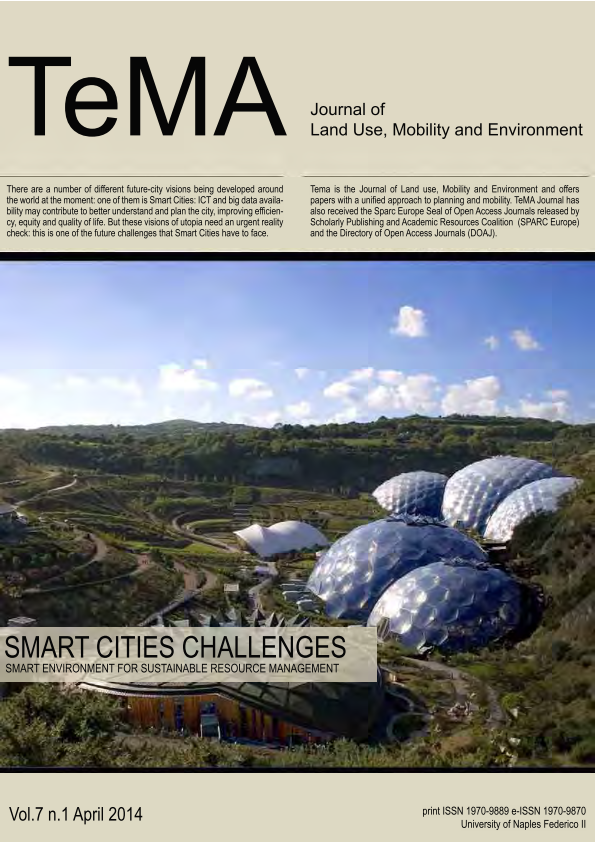-
1. Alphan, H., Doygun, H., & Unlukaplan, Y.I. (2009). Post-classification comparison of land cover using multi-temporal Landsat and ASTER imagery: the case of Kahramanmara angstrom, Turkey, Environmental Monitoring and Assessment, 151(1 – 4), 327 – 336
-
2. Aguilera, F., 2008. Análisis espacial para la ordenación eco-paisajística de la Aglomeracion Urbana de Granada (Spatial analysis for the ecological landscape planning in the Metropolitan Area of Granada). PhD Thesis. University of Granada, Granada (in Spanish: English abstract).
-
3. Bharath, S., Bharath, H.A., Durgappa D.S., & Ramachandra T.V. (2012). Landscape Dynamics through Spatial Metrics, Proceedings of India Geo Spatial Conference, Epicentre, Gurgaon, India, 7-9 February, 2012.
-
4. Bharath, H. A., Bharath, S., Sreekantha, S., Durgappa D.S., Ramachandra, T. V., (2012) “Spatial patterns of urbanization in Mysore: Emerging Tier II City in Karnataka, Proceedings of NRSC User Interaction Meet- 2012, 16th & 17th, Hyderabad, February 2012.
-
5. Bhaskar, P., (2012). Urbanization and changing green spaces in Indian cities (Case study – City of Pune), International Journal of Geology, Earth and Environmental Sciences, 2, 148- 156.
-
6. Bhatta, B., (2009). Analysis of urban growth pattern using remote sensing and GIS: A case study of Kolkata, India. International Journal of Remote Sensing, 30(18), 4733–4746.
-
7. Bhatta, B., Saraswati, S., & Bandyopadhyay, D., (2010a). Quantifying the degree-of-freedom, degree-of-sprawl, and degree-of-goodness of urban growth from remote sensing data. Applied Geography, 30(1), 96–111.
-
8. Bhatta, B., Saraswati, S., & Bandyopadhyay, D., (2010b). Urban sprawl measurement from remote sensing data. Applied Geography, 30(4), 731–740.
-
-
10. Chen, H.Y., Ganesan, S. & Jia, B.S., (2005). Environmental challenge for Post-reform housing development in Beijing”, Habitat International, Vol. 19, No. 3, pp. 571 – 589.
-
11. City Development Plan (2006-2012), Jawaharlal Nehru National Urban Renewal Mission.
-
12. Clapman, Jr., W.B., (2003). Continuum-based classification of remotely sensed imagery to describe urban sprawl on a watershed scale, Remote Sensing of Environment, 86(3), 322 - 340
-
13. Codjoe, S.N.A., (2004). Population and land use/cover dynamics in the Volta River Basin of Ghana, 1960-2010, Ecology and Development Series No. 15, Cuvillier Verlag, Gottingen
-
14. Congalton, R. G., Oderwald, R. G., & Mead, R. A., 1983. Assessing Landsat classification accuracy using discrete multivariate analysis statistical techniques. Photogrammetric Engineering and Remote Sensing, 49, 1671-1678.
-
15. Congalton, R.G., & Green K., (2009). Assessing the Accuracy of Remotely Sensed Data: Principles and Practices. CRC Press Taylor & Francis Group, Boca Raton, FL
-
16. Congalton, R.G., (1991). A review of assessing the accuracy of classifications of remotely sensed data. Remote Sensing of Environment, 37 (1), 35-46.
-
17. Desai C.G, Patil M.B, Mahale V.D., & Umrikar, B., (2009). Application of remote sensing and geographic information system to study land use/land cover changes: a case study of Pune Metropolis, Advances in Computational Research, 1, 10 – 13.
-
18. Di Gregorio, A., & Jansen, L.J.M., (1997). A new concept for a land cover classification system, in Proceedings of the Earth Observation and Environmental Information 1997 Conference, held at Alexandria, Egypt, from 13-16 October, 1997
-
19. Duda, R.O., Hart, P.E., Stork, D.G., (2000). Pattern Classification, A Wiley-Interscience Publication, Second Edition, ISBN 9814-12-602-0.
-
20. Gillies, R.R., Box, J.B., Symanzik, J., Rodemaker, E.J., (2003). Effects of urbanization on the aquatic fauna of the Line Greek Watershed, Atlanta – a satellite perspective, Remote Sensing of the Environment, 86(3), 411 – 412
-
21. Girardet, H. (1996). The Gaia Atlas of Cities: new directions for sustainable urban living, Gaia Books Limited, London. 1st Edition, ISBN: 1856750973.
-
-
23. Grimm, N.B., Grove, J.M., Pickett, S.T.A. and Redman, C.L. (2000). Integrated approach to long-term studies of urban ecological systems, BioScience, 50(7), 571 – 584
-
24. Gustafson, E.J., (1998). Quantifying landscape spatial pattern: what is the state of the art?, Ecosystems, 1, 143–156.
-
25. Herold, M., Goldstein, N., C., Clarke, K., C., (2003). The spatiotemporal form of urban growth : measurement, analysis and modeling. Remote Sensing of the Environment, 86, 286–302.
-
26. Jansen, L.J.M. & Di Gregorio, A., (1998). The problems with current land-cover classifications: development of a new approach, in Land-cover and land-use information systems for European Policy Needs, Office for the Official Publications of the European Communities, Luxembourg, 21 – 23
-
27. Ji, C.Y., Lin, P., Li, X., Liu, Q., Sun, D., & Wang, S., (2001). Monitoring urban expansion with remote sensing in China, International Journal of Remote Sensing, 22(8), 1441 – 1455
-
28. Kong, F., Yin, H., Nakagoshi, N., James, P., (2012). Simulating urban growth processes incorporating a potential model with spatial metrics, Ecological Indicators, 20, 82-91
-
29. Lata, K.M., Sankar Rao, C.H., Krishna Prasad, V., Badrinath, K.V.S., & Raghava Swamy, (2001). Measuring urban sprawl: a case study of Hyderabad, GIS Development, 5(12).
-
30. Lillesand T., Kiefer R., Chipman J. (2003). Remote sensing and image interpretation. Wiley, New York, Fifth edition.
-
31. Liu, J., Dietz, T., Carpenter, S.R., Alberti, M., Folke, C., Moran, E. & Taylor, W.W., (2007). Complexity of coupled human and natural systems, Science, 317(5844), 1513 – 1516.
-
32. Lopez, T. del M., Aide, T.M., & Thomlinson, J.R., (2001). Urban expansion and the loss of prime agricultural lands in Puerto Rico, Ambio, 30(1), 49-54
-
33. Keiner M. and Arley K., Transnational city networks for sustainability, Eur. Plann. Stud., 15 (2007), pp. 1368–1395
-
34. Martinuzzi, S., Gould, W.A., & Gonzalez O.M.R., (2007). Land development, land use, and urban sprawl in Puerto Rico integrating remote sensing and population census data, Landscape and Urban Planning, 79(3 – 4), 288-297
-
35. Massey, D. S., Arango, J., Hugo, G., Kouaouci, A., & Pellegrino, A., (1999). Worlds in Motion: Understanding International Migration at the End of the Millennium, Oxford university press, ISBN: 0199282765
-
36. McGarigal, K., & Marks, B. J., 1995. FRAGSTATS: spatial pattern analysis program for quantifying landscape structure. USDA Forest Service General Technical Report PNW-351.
-
37. Mitrakis, N.E., Topalogou, C.A., Alexandridis, T.K., Theocharis, J.B., & Zalidis, G.C., (2008). A novel self-organising neuro-fuzzy multi layered classifier for land cover classification of a VHR image. International Journal of Remote Sensing, 29, 4061−4087
-
38. Molles, M., (2006). Ecology: Concepts and Applications, 4th ed. McGraw Hill, Boston, USA.
-
39. Pathan, S.K., Jothimani, P., Pendharkar, S.P. and Sampat Kumar, D., (1989). Urban land use mapping and zoning of Bombay Metropolitan Region using Remote Sensing data. J. Indian Soc. Remote Sensing, 17(3), 11-22.
-
40. Pathan, S.K., Shukla, V.K., Patel, R.G., Mehta, K, S., 1991. Urban land use mapping - A case study of Ahmedabad city and its environs. J Indian Soc Remote Sensing, 19(2), 95- 112.
-
41. Ramachandra, T.V., and Kumar, U., (2009). Geoinformatics for Urbanisation and Urban Sprawl pattern analysis, In Geoinformatics for natural resource management, Chapter 19, 235 – 272
-
42. Ramachandra, T.V., Bharath, A.H., & Durgappa, D.S., (2012a). Insights to urban dynamics through landscape spatial pattern analysis, Int. J Applied Earth Observation and Geoinformation, 18, 329-343
-
43. Ramachandra, T.V., Bharath, A.H., & Sreekantha, S., (2012b). Spatial Metrics based Landscape Structure and Dynamics Assessment for an emerging Indian Megalopolis, International Journal of Advanced Research in Artificial Intelligence, 1(1), 48-57.
-
44. Ramachandra, T.V., Bharath, H.A., & Vinay S., (2013). Comprehension of temporal land use dynamics in urbanising landscape., Proceedings of User Interaction Meet - 2013, Balanagar, Hyderabad, 21-22, February, 1-6.
-
45. Ramachandra, T.V., Bharath, H.A., (2012a). Spatio-Temporal Pattern of Landscape Dynamics in Shimoga, Tier II City, Karnataka State, India, International Journal of Emerging Technology and Advanced Engineering, 2(9), 563-570.
-
46. Ramachandra, T.V., Bharath, H.A., (2012d). Land Use Dynamics at Padubidri, Udupi District with the Implementation of Large Scale Thermal Power Project, International journal of Earth Sciences and Engineering, 5, 409-417.
-
47. Roth, M., Oke, T.R., & Emery, W.J., (1989). Satellite-derived Urban Heat Islands from Three Coastal Cities and the Utilization of Such Data in Urban Climatology, International Journal of Remote Sensing, 10(11), 1699 – 1720
-
48. Sudhira, H.S., Ramachandra, T.V., & Jagadish, K.S. (2003). Urban growth analysis using spatial and temporal data, Journal of the Indian Society of Remote Sensing, 31(4), 299 – 311
-
49. Sudhira, H.S., Ramachandra, T.V., & Jagadish, K.S., (2004). Urban sprawl: metrics, dynamics and modeling using GIS, International Journal of Applied Earth Observation and Geoinformation, 5(1), 29 – 39
-
50. Sutton, P.C., (2003). A scale adjusted measure of “Urban sprawl” using nighttime satellite imagery, Remote Sensing of Environment, 86(3), 353 - 369
-
51. Taubenbock, H., Wegmann, M., Roth, A., Mehl, H., & Dech, S., (2009). Urbanization in India: Spatiotemporal analysis using remote sensing data. Computers, Environment and Urban Systems, 33(3), 179–188.
-
52. Uuemaa, E., Antrop, M., Roosaare, J., Marja, R., Mander, U., (2009). Landscape metrics and indices: an overview of their use in landscape research. Landsc. Res. 3, 1–28
-
53. Verzosa, L.C.O. and Gonzalez, R.M. (2007). Remote sensing, geographic information systems and Shannon’s entropy: measuring urban sprawl in a mountainous environment, In: Wagner W., Szekely, B. (eds.): ISPRS TC VII Symposium – 100 Years ISPRS, Vienna, Austria, July 5–7, 2010, IAPRS, Vol. XXXVIII, Part 7A. Available at
http://www.isprs.org/proceedings/xxxviii/part7/a/pdf/269_XXXVIII-part7A.pdf. Accessed on 1st Aug 2013.
-
54. Vinay, S., Bharath, H.A., Ramachandra, T.V., (2012). Spatio-temporal dynamics of Raichur City, LAKE 2012: National Conference on Conservation and Management of Wetland Ecosystems, 6-9th November 2012, School of Environmental Sciences Mahatma Gandhi University, Kottayam, Kerala.
-
55. Voogt, J.A., & Oke, T.R., (2003). Thermal Remote Sensing of Urban Areas, Remote Sensing of the Environment, 86, 370 – 384
-
56. World Urbanization Prospects revised, 2011. United nation department of socioeconomic affairs. Available at
http://esa.un.org/unup. Last accessed on 04th Aug 2013.
-
57. Xiao, J., Shen, Y., Ge, J., Tateishi, R., Tang, C., Liang, Y., & Huang, Z., (2006). Evaluating urban expansion and land use change in Shijiazhuang, China, by using GIS and remote sensing, Landscape and Urban Planning, 75(1), 69 – 80
-
58. Yang, L., Xian, G., Klaver, J.M., & Deal, B., (2003). Urban land-cover change detection through sub-pixel imperviousness mapping using remotely sensed data, Photogrammetric Engineering and Remote Sensing, 69(9), 1003-1010.
-
59. Yeh, A.G.O., & Li. X., (1999). Economic development and agricultural land loss in the Pearl River Delta, China, Habitat International, 23(3), 373 – 390.
-
60. Yeh, A.G.O., & Li. X., (2001). Measurement and monitoring of urban sprawl in a rapidly growing region using entropy, Photogrammetric Engineering and Remote Sensing, 67(1), 83-90.



